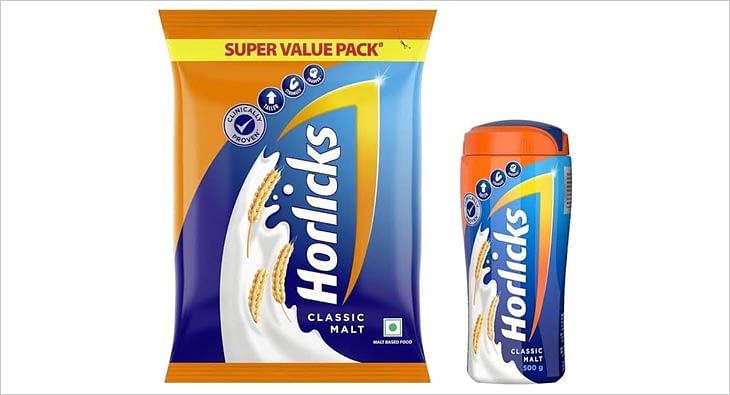‘Men In the Kitchen campaign, a subtle attempt at breaking gender stereotypes'
Meghna Apparao, Chief Business Officer, Licious, shares insights on breaking stereotypes, banking on quality, expansion plans, and the brand’s marketing strategy

Brands are continuously looking for talking points that make a strong impression on their consumers and enhance brand image. In the past, various brands have adopted a strategy where the message speaks more than just about their offering. Recently, during the 13th season of the IPL, Licious ran a campaign, ‘Men In the Kitchen’, which was a subtle attempt at breaking gender stereotypes. Speaking on the strategy behind the campaign, Meghna Apparao, Chief Business Office, Licious said that it is an endeavour by the brand to democratize a space that numerous ladies thought of sharing with the men.
According to consumer research at Licious, many men participate in kitchen and cooking activities, especially since the implementation of the lockdown due to the Covid-19 pandemic. Throwing some light on the insight behind centralising these stats in the brand campaign, Apparao added, “In busy, nuclear families cooking and mealtimes are when a family comes together. Men are playing an increasingly significant role in this process. Our consumer research showed that 65% of single men and 71% of married men are involved in cooking and as many as 92% are involved in shopping for the meals. We wanted to ensure our communication acknowledges the role of the male-cooking-enthusiasts. It is clutter-breaking, but more importantly, it is an attempt to democratize a space that many women looked forward to sharing with the men in the house.”
Further highlighting the importance of the campaign in strengthening the brand image, she elaborated, “It also serves the purpose of highlighting our product USPs. A pack of Licious meat and seafood comes in a vacuum pack that one can open and throw in the cooking pan. Putting male protagonists in the Licious kitchen has helped us effectively communicate the easy, convenient, highly enjoyable, and elevated meaty experience that Licious creates.”
The Corona Effect
While a lot of brands and businesses experienced a loss in sales during the first two quarters of the financial year, the food and beverage sector witnessed growth. With work from home becoming the new normal, people started cooking more at their homes and this proved to be an advantage for Licious. “Given an exponential growth in demand, Licious has witnessed a 300% growth over the last eight months. The order numbers have steadily climbed to being 1 million orders per month. The company also enjoys over 90% repeat consumption across markets. The current average basket size is Rs 700, which is a 30% jump over the pre-COVID era,” said Apparao. For Licious, Bengaluru, Delhi NCR, and Mumbai are the biggest markets.
Marketing brand ‘Licious’
Consumer insights are important for any brand, which then help the brand product strategy, customize the user experience, build brand relevance and also their marketing communication. Commenting on how Licious uses consumer insight to enhance their brand message and communications, Apparao says, “The extensive research conducted indicates that what seems to be of core importance to the consumer, is the idea of enjoyment. An ardent meat lover is excited about being able to juice out the most pleasure possible from eating meat - pleasure in the meat itself or the experiences surrounding it. What forms the core of any great meaty dish is the freshness of the meat itself, which will taste delicious in any recipe. This is the core consumer insight on which we have built our key communication and will continue to do so.”
The #ReadyToGame campaign for Licious’ ready-to-cook range was released during IPL. The narrative was built around quickly preparing match snacks in 8 minutes using the Licious range. The campaign featured popular names like actor Aparshakti Khurana and comedian Naveen Richard. Elaborating how these associations helped the brand-building process, Apparao says, “We were able to use their easy-going attitude and wit to build an effective narrative around the innovative range of Licious products. The Men-in-Kitchen narrative works beautifully here, with these two charming men navigating their way through the kitchen without cooking up a fuss.”
When asked on the core marketing strategy for Licious, Apparao states, “We curate an individual product catalogue for each market, keeping in mind the taste and preference of the region. This applies to the raw and fresh products where we modify cuts based on consumer preference and to the ready-to-cook category, which features regional delicacies. We also do ethnicity-based targeting with an attempt to re-create traditional cuts of meats and seafood and heirloom recipes that one has grown up with. Besides, we are constantly running consumer surveys and conversations, which help us improve our services and keep us relevant to the consumers.”
Being a digital-first brand, the preferred mode of brand communications is digital. However, Licious employs a 360-degree approach to reach out to their consumers. Apparao says, “Digital and social media forms a key part of our media mix. We also utilize other ATL media like print and television. We have used OOH as part of certain strategic communication as well. We will continue to invest in our communication tools since we are not just building a brand but an entire category. And in that endeavour, it is crucial that we create a powerful and consistent dialogue with our consumers.”
Expansion Plans In Line
Being a digitally-native brand, 98% of Licious’ sales come from the app/web channel with retail stores and other channel partners accounting for the rest. Commenting on the expansion plans for their on-ground retail stores, Apparao added, “We have 2 offline stores called the Licious Experience Centres in Gurgaon and Bangalore. We are aiming at building an omnichannel presence for Licious, so offline presence is a focus area for us. We will be adding more stores during the coming year and these will be in the existing Licious markets.”
Apart from the plans for the retail markets, there are other developments also in the pipeline. “We have launched a lot of products recently and also introduced our Christmas special range. We will definitely be expanding our presence in more Indian cities - both online & offline. We will also launch new & exciting products and product category expansion. We will continue to deep-dive into consumer insights & continue creating products & services that can effectively elevate the way India experiences meat”, says Apparao.
Read more news about Marketing News, Advertising News, PR and Corporate Communication News, Digital News, People Movement News
For more updates, be socially connected with us onInstagram, LinkedIn, Twitter, Facebook Youtube, Whatsapp & Google News
About 60% Instagram influencers in India have fake followers: Report
As per a media report, influencer marketing platform KlugKlug has found that only 2.48 million profiles out of the 8 million have ‘high-quality’ followers
Two of three Instagram influencers in India have more than 60 per cent fake followers, a report by influencer marketing platform KlugKlug shows.
This is particularly true for the beauty and fashion sector, the report noted.
Other countries that have influencers with fake followers are Brazil, the UAE and Indonesia.
As per media reports, such Instagram fake followers can be roped in for as little as Rs 10 to a high of Rs 1,000.
According to Klug Klug India, only 2.48 million profiles out of the 8 million have high-quality followers.
A number of other categories have also been buying fake followers, media reports have noted.
As per a media expert, quoted in the reports, brands are finding it difficult to identify and curb the menace of fake followers and bots.
In a recent setback for influencers the Central Consumer Protection Authority (CCPA) has said those promoting activities like gambling and betting are equally liable as the companies promoting the same.
15% consumers enhance their user experience through virtual assistants: Kantar report
According to Soumya Mohanty, Managing Director & Chief Client Officer- South Asia, Insights Division, Kantar, less than 1% of ads get tested due to lack of time
Marketing data and analytics firm Kantar has unveiled a report that studies the burgeoning AI market to dish out actionable insights for marketers. Within AI, virtual assistants are the fastest growing segment. The report noted that 15% consumers enhanced their ‘user experience through virtual assistants’. This segment is the fastest growing at 27% YoY.
According to the study, while ‘fitness’ and ‘social media’ apps are amongst the leading categories, driving AI adoption (with an average of 2.3 AI led features embedded in these applications), segments like ‘BFSI’, ‘job search’ and ‘short video’ apps are relatively slow in AI adoption, with an average of 1.2 features each. Entertainment apps, digital commerce and pharmacy apps stand somewhere in the middle with 2.0 & 1.8 AI features being adopted, respectively.
Additionally, the report said that while 90% of marketing and sales leaders think their organisations should be using AI “often”, 60% said their organisations “rarely or never” do. Speaking to exchange4media, Soumya Mohanty, Managing Director & Chief Client Officer- South Asia, Insights Division, Kantar highlighted that currently there are a lot of organisations who know that there is something called AI, but haven’t yet figured out how it could help them holistically.
“A lot of the AI just gets used for efficiency purposes, so repetitive tasks get automated,” Mohanty pointed out. Data also plays a big role in why certain organisations are struggling with how to use AI.
For instance, Mohanty explained that in segments like D2C, telecom etc. there is a lot of primary or first-party data. So being able to leverage AI also gets easier. “It's the traditional large sort of FMCG type companies where data sits in silos. You don't really have one single source of data where it's a little difficult to use the full power of AI, because the full power of AI also needs a lot of data sitting in a structure that you can use,” she added.
So, can AI help marketers have a unified view of data? No, says Mohanty. “AI does not help marketers get a unified view of data. Once you have data in a unified way, AI can help you do a lot more with that data.”
According to her, organisations today need to have good, strong data warehousing. “It needs to make sense because a lot of the silos are also because everybody owns one part of it. A lot of people have their own analytics teams internally, so there are a lot of agendas and stakeholders. And then we say data is in silos because fundamentally, when you're doing something internally, different people have different stakes in it,” Mohanty added.
Puneet Avasthi, Senior Executive Director, South Asia, Insights Division, Kantar shared that most organisations are now heavily investing in creating first-party data sets. “Companies that have first party data about their consumers and transactions or interactions that they have with the brand are going to be able to leverage that more effectively to create sharper profiles for the brand as such for the consumer and build relevant recommendations at the right moments.
Panning out she also highlighted how AI can be leveraged to enhance market research and make it more accessible, a part of which Kantar is itself involved in. “A lot of times people say that we can't test an ad because we don't have time. So less than 1% of advertising gets tested and just gets put out. Does it work when it gets put out? It is the question the audience should answer, because so many times, it backfires,” Mohanty shared. Apparently, digital particularly doesn't get tested because organisations just do a/b testing and leave it at that.
Speaking of preferred use cases of AI, Avasthi added that various businesses and brands are looking at creating an experience for the brand that is in line with the brand's architecture and progress across all touch points. “That is something that the AI engines that are working behind can ensure, that all such interactions are consistently delivered across different virtual assistants or chatbots that are available to the consumer,” he said.
The other use case, according to Avasthi, is ensuring that there is greater visibility for the brand in the digital sphere as such, through various recommendation engines, when a certain need is being looked for and to throw up the right kind of information about the brand so that the brand message is amplified in the mind of the consumers.
Among other insights from the Kantar AI report is that 88% consumers used AI based algorithms which analysed their preferences, behaviours, and interests to create personalised recommendations for tailored experiences. This segment grew at 6 % YoY. At 21%, ‘smart home automation’ is a smaller segment but growing at 25% YoY.












 Share
Share
